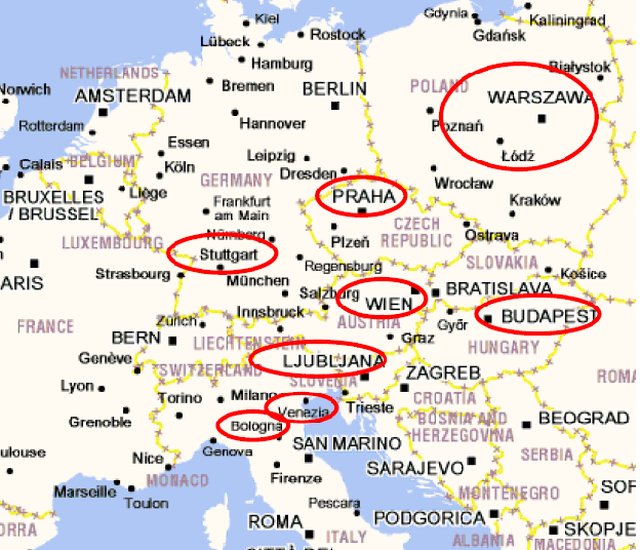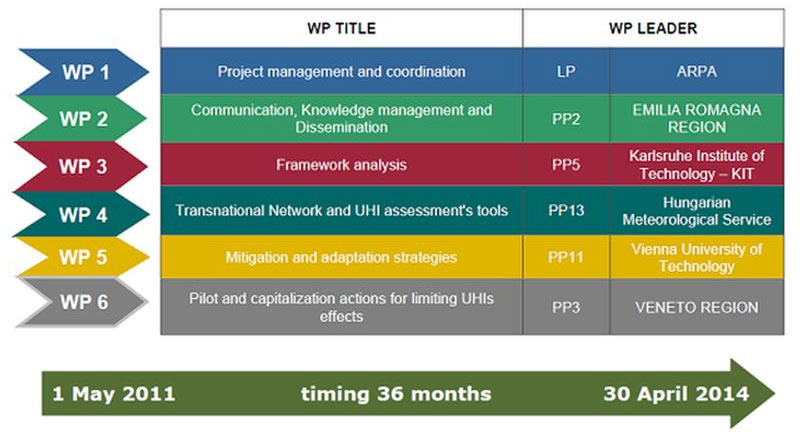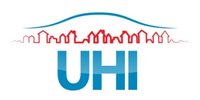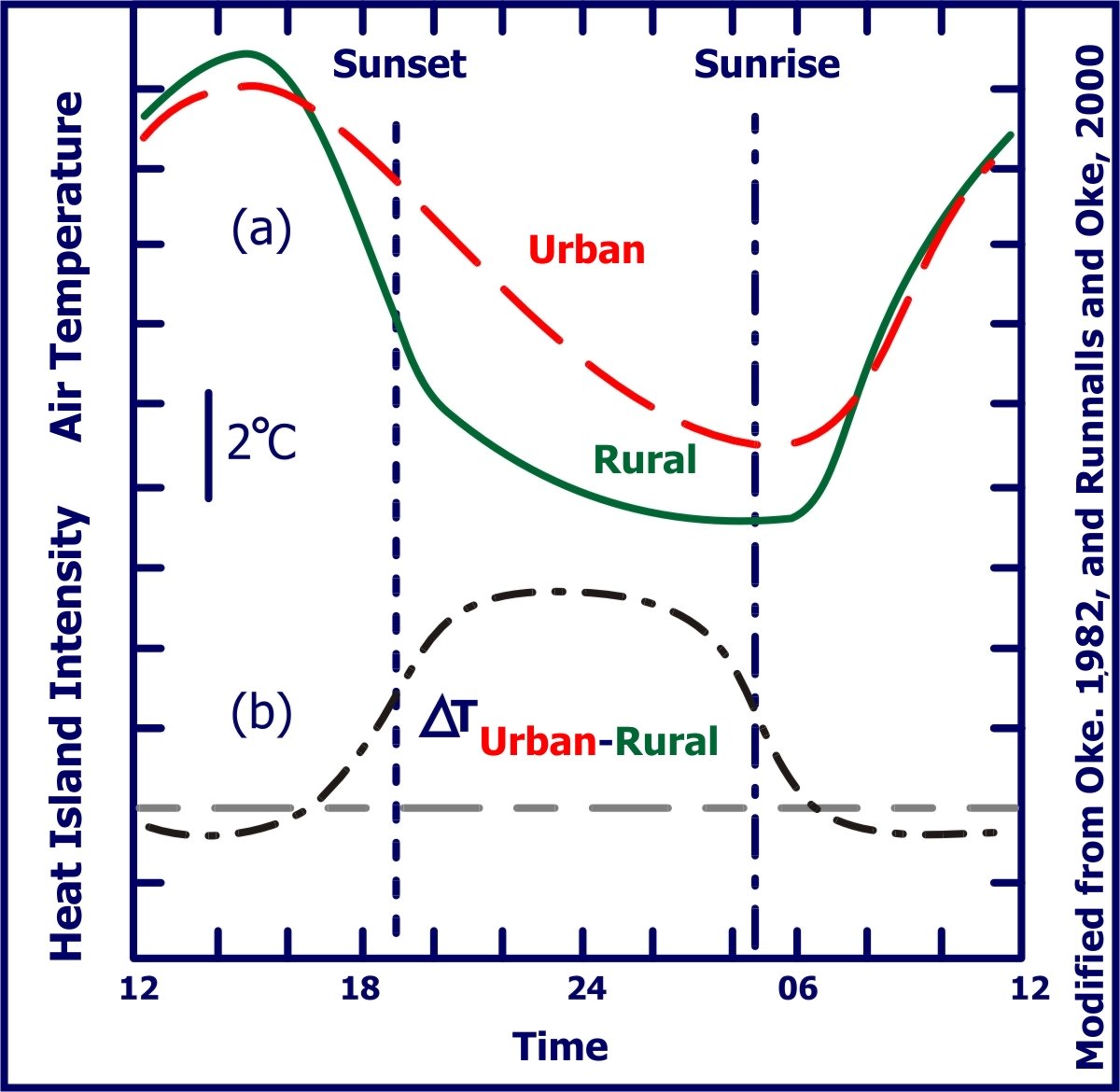The UHI effect means an urban area is significantly warmer than its rural surroundings. The UHI is a microclimatic phenomenon that occurs in the metropolitan areas. It consists in a significant increasing of the temperature in the urban area respect to the surrounding peri-urban and rural neighbourhoods.
- Urban Heat Island
- Project area of intervention
- Project focus
- Project objectives and workpackages
- Publications
This phenomenon is known and studied since eighties and is caused by:
- physical characteristics of the surfaces, such as concrete and asphalt, that absorb rather than reflecting solar radiation;
- lack of natural evaporative surfaces (vegetation) that, in rural areas, contribute to maintain a stable energy balance;
- augmentation of the vertical surface that both provide an increased surface absorbing and reflecting solar radiation as well as block winds that could contribute to the lowering of the temperature;
- human activities that mainly consists in heat produced by heating and cooling plants and buildings, industrial activities, vehicles, etc.;
- high level of pollutants that alter the radiative nature of the atmosphere.
The intensity of UHI phenomenon increases in proportion to the dimension and population of the urban area; consequently, it is doomed to become more severe in the coming years due to the constant growing of number of people living in urban areas.
The UHI effects are directly related to (and worsened by) the climate change phenomena, where it is expected that an increase in the average temperature has a stronger and immediate effect on the health of people living in cities, and particularly of the vulnerable groups (the thick and the elderly).
Figure 1.
Diurnal variation of the urban heat island intensity
The UHI magnitude is characterized by heat island intensity, which is the temperature difference of an urban and rural area (DTurban-rural). This temperature difference has diurnal and seasonal variations; that is usually larger at night and in winter (Fig. 1).
UHI Project is developed in 8 of the most relevant metropolitan areas and MEGAs (Mega Urban Regions) of Central Europe cooperation programme (Fig. 2):
- the metropolitan cluster of Bologna – Modena (IT)
- the urban corridor of Venice – Padua (IT)
- Wien (AT)
- Stuttgart (GE)
- Łódz & Warsaw (PL)
- Ljubljana (SI)
- Budapest (HU)
- Prague (CZ)

Figure 2.
Project area of intervention
UHI Project aims at developing mitigation and risk prevention and management strategies concerning the urban heat island (UHI) phenomenon. This activity is supported by the Central European Programme and the European Regional Development Fund.
Project objectives and workpackages
UHI Project wants to boost transnational discussion among policy makers, local administrators and professionals that will bring to developing policies and actions for preventing, adapting and mitigating the natural and man-made risks arising from the UHI phenomenon.
In particular, the project intends to:
- Provide a deeper knowledge on the man-made risk of the UHI and its interactions with global climate change
- Establish a permanent transnational network for monitoring the phenomenon and its development
- Set up suitable strategies for the mitigation of- and the adaptation to UHI
- Improve current land-use planning tools and civil management systems according to mitigation and adaptation strategies.

Figure 3.
UHI project's workpackages
Lead partner: Regional Agency for Environmental Protection in Emilia Romagna – ARPA
Partners:
- Emilia Romagna Region - General Directorate Territorial and Negotiated Planning, Agreements
- Veneto Region - Spatial Planning
- CORILA
- Karlsruhe Institute of Technology
- Municipality of Stuttgart
- Meteorological Institute - University of Freiburg
- Institute of Geography and Spatial Organization, Polish Academy of Sciences
- Nofer Institute of Occupational Health
- Vienna University of Technology - Dept. of Buildings Physics and Building Ecology
- Municipal Dept 22 - Environmental protection Dept in Vienna
- Hungarian Meteorological Service - OMSZ
- Charles University, Prague, Faculty of Mathematics and Physics
- City Development Authority of Prague
- Czech Hydrometeorological Institute
- Scientific Research Centre of the Slovenian Academy of Sciences and Arts
- Municipality of Ljubljana
Web site of the UHI project is available: www.eu-uhi.eu
Publications of the Hungarian Meteorological Service in the framework of the UHI project activity
- Book
- Bartholy, J., Bozó, L. and Haszpra, L. (editors), 2011: Climate change - 2011: Climate scenarios for the regions of the Carpathian basin, Budapest: Hungarian Academy of Science, 281 p. (ISBN: 978-963-284-232-5) (in Hungarians)
- Chapter of book
- Kis-Kovács G., Bozó L., Lovas K., Nagy E. and Tarczay K., 2011: Investigation of Greenhouse Gases’ Sources and Sinks in Hungary, In: Tamás P, Bulla M. (editors) Environmental Vulnerability, Resilience and Adaptation Capacities, Budapest: Institute for Sociology, Hungarian Academy of Sciences, pp. 305-314. (ISBN: 978-963-8302-40-3) (in Hungarian)
- Bozó, L., 2011: Climate change in Central Europe: observations and model scenarios, In: Veisz O. (editor) Climate Change: Challenges and Opportunities in Agriculture: AGRISAFE Final Conference, Budapest, Hungary, 2011.03.21-2011.03.23. Martonvásár: Agricultural Research Institute of the Hungarian Academy of Science, pp. 9-11. (ISBN: 978-963-8351-37-1)
- Bihari, Z., Szalai, S. and Bozó, L., 2011: Natural environment – Climate, In: Kocsis K, Schweitzer F. (editor) Hungary in maps, Budapest: Academy of the Hungarian Science, Research Institute for Geographical Science, pp. 46-51. (ISBN: 978-963-9545-33-5) (in Hungarian)
- Periodical
- Bozó, L., 2011: Climate change and natural resources, GAZDÁLKODÁS 55: pp. 548-552. (in Hungarian)
- Conference release
- Bozó, L., 2011: Climate change: certainty and uncertainty In: Turchany, G. (editor) Holistic approach of the sustainable development. Budapest, Hungary, 2011. 11. 15.: pp. 104-111. (ISBN: 978 963 08 3696 8) (in Hungarian)
- Oral presentations
- Baranka, Gy., 2012: Evaluation of the Urban Heat Island Effects in Budapest, Hungary. ICUC8 Conference, 6-10 August, 2012, Dublin, Ireland
- Baranka, Gy., 2012: Evaluation of the Urban Heat Island Effects in Central Europe, EUMETNET Working Group on Instrumentation 6th Meeting, 12-13 September, 2012, Budapest, Hungary
- Bozó L., 2012: Climate Research at the Hungarian Metservice, UHI Project Meeting, 28-29 February, 2012, Budapest, Hungary
- Baranka, Gy., 2012: Recent results of the UHI. Annual meeting of the Department for Observations at the Hungarian Metorological Service, 9 July 2012, Budapest, Hungary (in Hungarian)
- Baranka, Gy., Dobi, I., 2012: Urban Heat Island studies at Budapest, Hungary. Annual meeting of the Hungarian Meteorological Association, 29-31 August 2012, Debrecen, Hungary (in Hungarian)
- Dobi, I., 2012: Climate change in cities. Green University at Óbuda, Budapest, 11 October 2012. (in Hungarian)
- Németh, Á., 2012: Human comfort studies, Advance Education, Hungarian Meteorological Service. (in Hungarian)
- Poster
- Németh, Á., Kovács, A., Unger, J. and Gulyás, Á.: Urban/Rural Thermal Comfort Changes over the Past Half-Century in Budapest (Hungary), ICUC8 Conference, 6-10 August, 2012, Dublin, Ireland
- Promotional brochure
- Baranka, Gy., 2011: Urban air quality. Guide for urban climate. Edited by Urban Climate Working Group (editor: Ongjerth R.). (in Hungarian)
- Project reports
- Baranka Gy., 2011: Air Quality Forecast for Budapest, Final Report for OTKA (PD 75500) research project.
- Baranka, Gy., 2012: Preliminary Recognition Action, UHI WP4 Project Report, 2012
- Dobi I., 2012: Analysis and modelling of thermal and human bio-climatic effects of cities on the basis of surface and satellite measurements, expending of results. OTKA (K-68277) Final Report (in Hungarian)
- Leaflet
- Urban climate (in Hungarian)
 |
 |
 |
This project is implemented through the CENTRAL EUROPE Programme co-financed by the ERFA.











